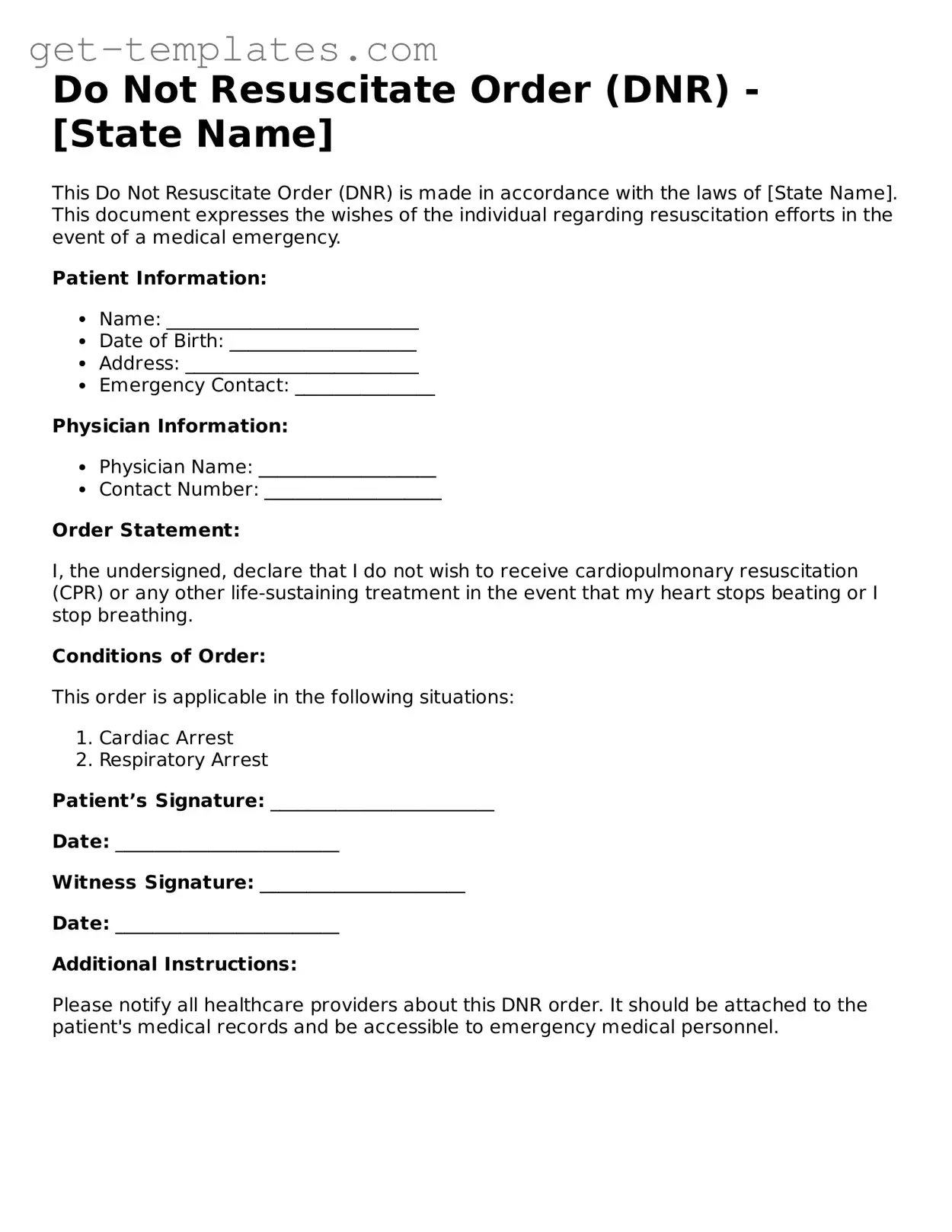Do Not Resuscitate Order (DNR) - [State Name]
This Do Not Resuscitate Order (DNR) is made in accordance with the laws of [State Name]. This document expresses the wishes of the individual regarding resuscitation efforts in the event of a medical emergency.
Patient Information:
- Name: ___________________________
- Date of Birth: ____________________
- Address: _________________________
- Emergency Contact: _______________
Physician Information:
- Physician Name: ___________________
- Contact Number: ___________________
Order Statement:
I, the undersigned, declare that I do not wish to receive cardiopulmonary resuscitation (CPR) or any other life-sustaining treatment in the event that my heart stops beating or I stop breathing.
Conditions of Order:
This order is applicable in the following situations:
- Cardiac Arrest
- Respiratory Arrest
Patient’s Signature: ________________________
Date: ________________________
Witness Signature: ______________________
Date: ________________________
Additional Instructions:
Please notify all healthcare providers about this DNR order. It should be attached to the patient's medical records and be accessible to emergency medical personnel.
